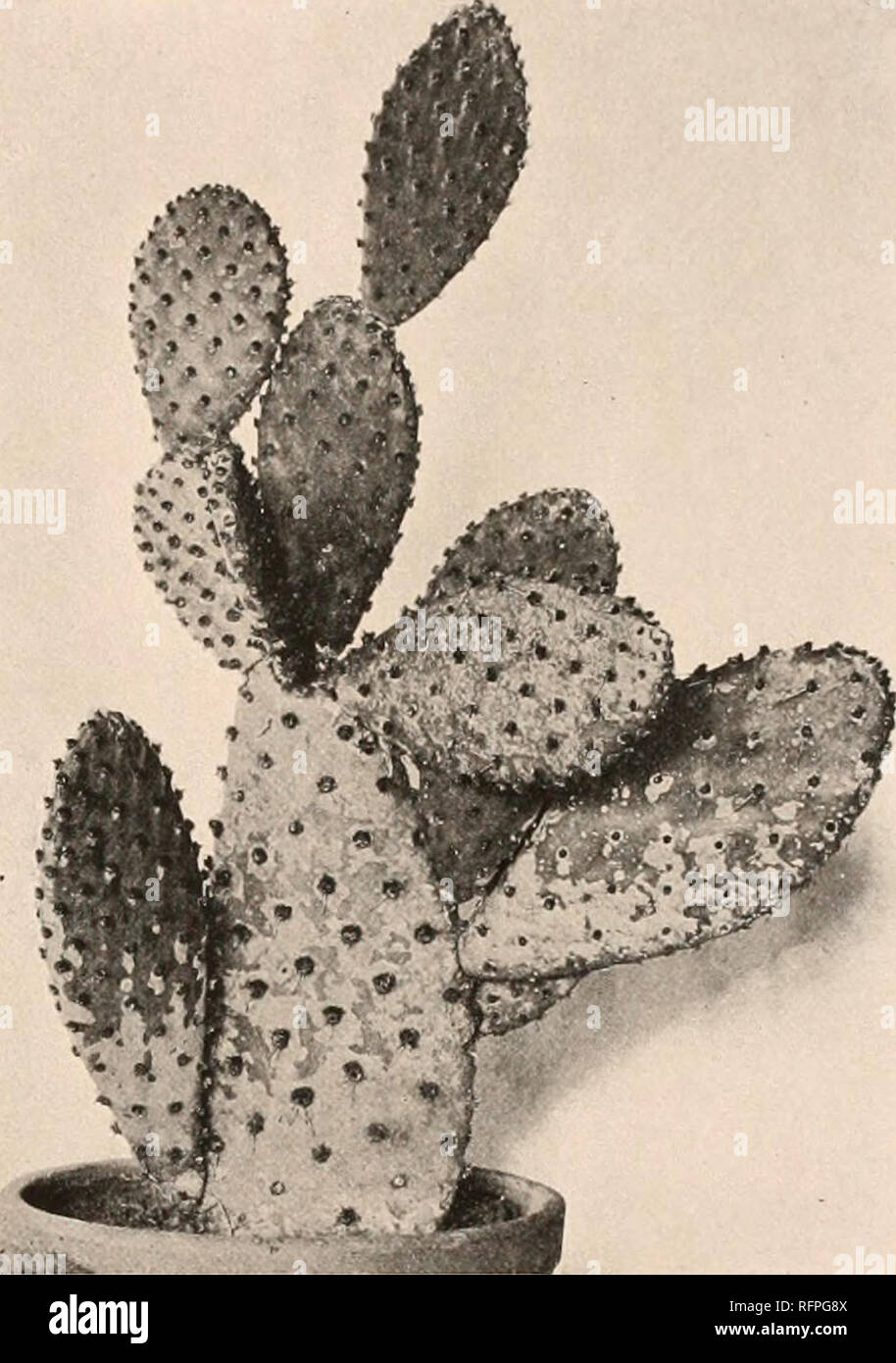. Carnegie Institution of Washington publication. . FIG. 150.—Opuntia microdasys. FIG. 151.—Opuntia, probable hybrid. Cactus linkii and C. ottonis, both credited to Mexico, are known only from SouthAmerica. If this Opuntia really came originally from Brazil, it might very well be the same as Opuntia inamocna. As shown above (p. 116), Opuntia pubcrula is referred to 0. dccumbcns. The 0. puberula of our gardens, however, is quite a different plant, and in all probability is of hybrid origin. It is almost identical with a hybrid between 0. microdasys and 0. cantabrigiensis which Dr. Rose collecte

Image details
Contributor:
Book Worm / Alamy Stock PhotoImage ID:
RFPG8XFile size:
7.2 MB (311.8 KB Compressed download)Releases:
Model - no | Property - noDo I need a release?Dimensions:
1326 x 1885 px | 22.5 x 31.9 cm | 8.8 x 12.6 inches | 150dpiMore information:
This image is a public domain image, which means either that copyright has expired in the image or the copyright holder has waived their copyright. Alamy charges you a fee for access to the high resolution copy of the image.
This image could have imperfections as it’s either historical or reportage.
. Carnegie Institution of Washington publication. . FIG. 150.—Opuntia microdasys. FIG. 151.—Opuntia, probable hybrid. Cactus linkii and C. ottonis, both credited to Mexico, are known only from SouthAmerica. If this Opuntia really came originally from Brazil, it might very well be the same as Opuntia inamocna. As shown above (p. 116), Opuntia pubcrula is referred to 0. dccumbcns. The 0. puberula of our gardens, however, is quite a different plant, and in all probability is of hybrid origin. It is almost identical with a hybrid between 0. microdasys and 0. cantabrigiensis which Dr. Rose collected in Hidalgo, Mexico, in 1905, and which is now grown in the collection in Washington and in the New York Botanical Garden. Illustrations: Agr. Gaz. N. S. W. 25: pi. opp. p. 138; p. 138; Gard. Chron. III. 30: f. 76; Rep. Mo. Bot. Gard. 19: pi. 28, in part; 20: pi. 12, in part; Safford, Ann. Rep. Smiths. Inst. 1908: pi. 10, f. 4; U. S. Dept. Agr. Bur. PI. Ind. Bull. 262: pi. 5, f. 2. Plate xxn, figure i, represents joints of the plant grown in a garden at Riverside, Cal- ifornia, received by Dr. Rose in 1905. Figure 150 is from a photograph taken by Professor F. E- Lloyd in Zacatecas, Mexico, in 1908.. Please note that these images are extracted from scanned page images that may have been digitally enhanced for readability - coloration and appearance of these illustrations may not perfectly resemble the original work.. Carnegie Institution of Washington. Washington, Carnegie Institution of Washington